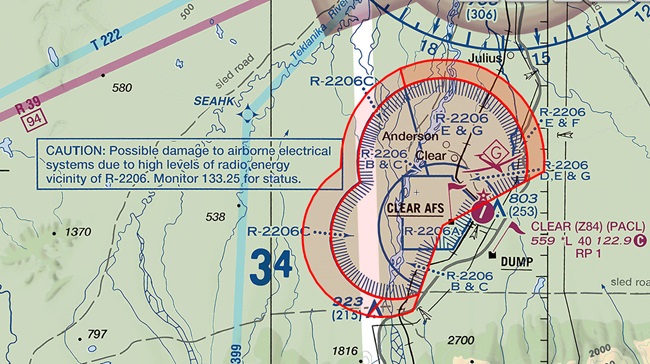Pilots: Plan on Florida Super Bowl restrictions
Civil Air Patrol celebrates 20 years of ‘interceptions’
Pilots can stay out of the Super Bowl limelight by adhering to FAA airspace protocols in place for the February 7 game at Raymond James Stadium in Tampa, Florida. Best to leave the headlines to the two teams fighting for the championship, Canadian singer The Weeknd’s halftime show, and Sarah Thomas’s history-making role as the first female to officiate a National Football League title game.
Pilots should be on the lookout for special air traffic procedures centered on Tampa from February 3 to 9—well ahead of the 6:40 p.m. Eastern time kickoff—that could affect VFR and IFR arrivals and departures. Pilots should expect a 30-nautical-mile-radius temporary flight restriction over the stadium, along with preferred IFR arrival and departure routes. A parking reservation program will be in place at all area airports, so pilots will need to contact their FBO of choice to make arrangements. The FAA recommends that pilots check notams “frequently to verify they have the most current information.”
Seventeen airports are affected by the airspace procedures: Tampa International Airport, St. Pete-Clearwater International Airport, Lakeland Linder International Airport, Sarasota/Bradenton International Airport, Brooksville-Tampa Bay Regional Airport, Tampa Executive Airport, Clearwater Air Park Airport, Pilot Country Airport, Albert Whitted Airport, Zephyrhills Municipal Airport, Peter O. Knight Airport, Tampa North Aero Park Airport, Plant City Airport, Bartow Executive Airport, Winter Haven Regional Airport, South Lakeland Airport, and Venice Municipal Airport.
Interceptions above the field will be handled by U.S. Air Force jet crews. The crews will practice capture procedures in advance with Civil Air Patrol volunteers flying Cessna 182s into simulated restricted airspace. During typical training exercises, two general aviation aircraft fly as intercept targets for Air National Guard fighter jets while a third CAP aircraft, known as a “high bird,” flies as a communications hub coordinating radio traffic from participants on the ground and in the air, explained Civil Air Patrol Lt. Col. Steven Solomon Closer to game time, the U.S. Air Force will dispatch fighter jets to patrol the TFRs.
The Civil Air Patrol is marking its twentieth year as a participant in the North American Aerospace Defense Command (NORAD) air-defenses exercises designed to protect the big game’s airspace. A January 28 briefing at MacDill Air Force Base near Tampa will commemorate the air team’s anniversary. It will include members of the CAP’s Florida Wing and static displays of a U.S. Air Force Boeing KC–135 Stratotanker, an Air National Guard McDonnell Douglas F–15 Eagle fighter jet, a U.S. Customs and Border Protection Sikorsky UH–60 Black Hawk helicopter, and other aircraft.




